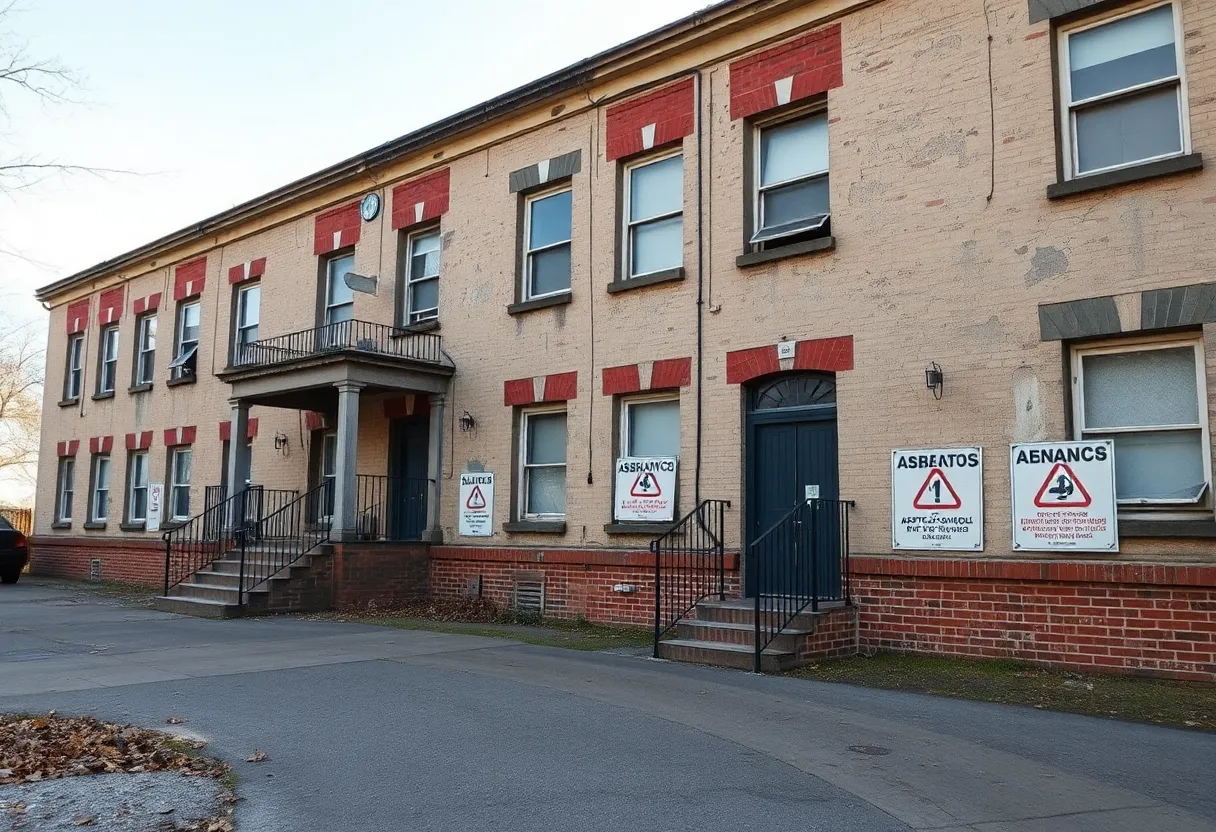News Summary
A recent FOI request reveals that more than 100 schools in Devon contain asbestos, a known health hazard. This alarming situation raises concerns among parents and officials, as many schools are in deteriorating conditions, with a national audit indicating 21,500 schools in the UK face similar risks. Tiverton High School emerges as a case study, facing significant challenges yet awaiting a long-promised rebuild. Calls for a national asbestos removal plan intensify as health experts highlight the dangers posed by asbestos exposure in educational settings, advocating for immediate action.
Asbestos Crisis: Over 100 Devon Schools at Risk
In a startling revelation, more than 100 schools across Devon have been identified as containing asbestos, a highly hazardous material known for its deadly health risks. According to a recent Freedom of Information (FOI) request, the data indicates that a total of 102 primary schools, two nurseries, and one secondary school in the region are at risk, raising alarm bells among parents, educators, and health officials.
The Asbestos Legacy
Asbestos is a naturally occurring fibrous mineral that has a dark history in building materials. Used extensively in the UK from the 1950s until its ban on blue and brown asbestos in 1985 and white asbestos in 1999, it was common in a variety of products. This includes insulation materials, boilers, pipes, floor tiles, and fireproofing boards, as well as roofing sheets made of asbestos cement. Unfortunately, while these materials were once deemed safe, they have since been linked to serious health issues, including mesothelioma and other asbestos-related diseases.
Schools in Deteriorating Condition
The state of schools in Devon highlights a much larger national issue. An estimated 21,500 schools across the UK still contain asbestos, with many at risk of further deterioration. This quickening urgency comes in light of a national audit revealing that 24,000 school buildings are beyond their initial design lives and could be at risk of collapse.
Tiverton High School: A Case Study
A focal point in this ongoing crisis is Tiverton High School, which has finally been included in a government rebuilding program. This school has faced significant challenges, including being built over 60 years ago on a floodplain, consequently posing a “risk to life” due to regular flooding, as noted by the Environment Agency. Despite being promising a rebuild as far back as 1999, it has taken until now for the Department for Education (DfE) to recognize the need for necessary investment.
The construction work at Tiverton High School is slated to commence in April 2025, a significant delay that has many questioning the government’s commitment to student safety and educational achievement. The school is currently catering to 1,300 pupils, even though its designed capacity should accommodate 1,800, underscoring the urgent need for modernization.
The Health Crisis Linked to Asbestos
Health experts are increasingly alarmed by the statistics surrounding asbestos exposure in schools. More than 5,000 people die each year in the UK from diseases caused by asbestos, notably mesothelioma, which can strike down teachers, pupils, and support staff alike. Over the past four decades, around 10,000 individuals within educational settings have been diagnosed with mesothelioma due to past exposures. Campaigners emphasize that the real number could be much higher, as thousands more may die from latent effects of asbestos exposure.
Calls for Action
In light of these challenges, there has been an increasing chorus of calls for a national plan to remove asbestos from schools and hospitals to protect future generations. Numerous health experts and campaigners have advocated for a phased removal approach, particularly in educational facilities. However, the government has consistently rejected proposals for a comprehensive national asbestos removal strategy, fearing financial implications.
Recommendations for Safety
Despite the lack of a robust removal plan, recommendations are in place to safeguard students and staff from asbestos exposure. These include regular air quality monitoring in buildings known to contain asbestos and establishing standard training protocols for managing asbestos safely. Although schools are not legally required to inform parents about the presence of asbestos, transparency remains a significant concern among educators and parents alike.
As the spotlight remains on the critical condition of schools housing this dangerous material, the need for proactive measures and effective policy action has never been clearer. The health of students and staff hangs in the balance, and immediate steps must be taken to rectify this pressing issue.
Deeper Dive: News & Info About This Topic
HERE Resources
Electrician Battles Mesothelioma for Justice
Call to Action for a National Database for Asbestos in the UK
Concerns Rise Over Asbestos Removal at Winter Park Post Office
Asbestos: A Silent Killer Claims Lives Across the UK
The Deadly Asbestos Legacy in Libby, Montana
Family Appeals for Witnesses After Asbestos-Related Death
Self-Employed Contractor Faces Legal Consequences for Asbestos Violations
Shocking Asbestos Scandal in Stockport: Contractor Endangers Lives
Widespread Asbestos Unawareness Among Government Employees Raises Urgent Health Concerns
The Asbestos Scandal Unfolds in Cheshire: Serious Breaches of Safety Regulations



















